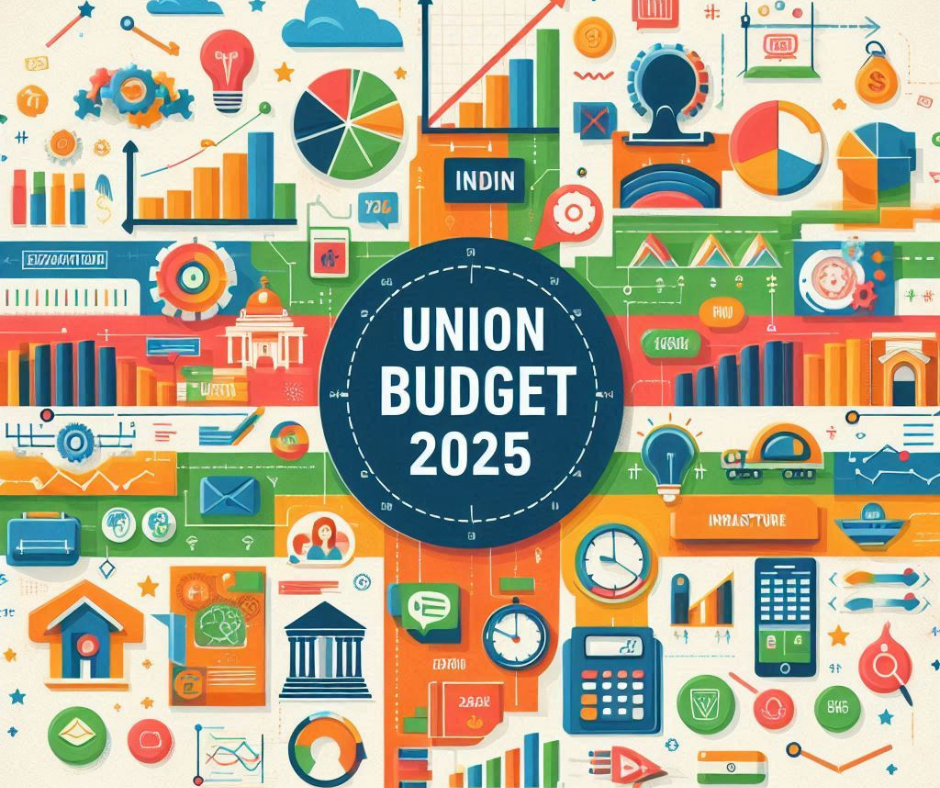The Union Budget 2025 introduces a series of transformative measures aimed at revitalizing the real estate sector and making homeownership more attainable for the middle class. These initiatives are poised to stimulate economic growth, bolster infrastructure development, and restore confidence among homebuyers and investors.
Significant Tax Relief for the Middle Class
A pivotal component of the budget is the substantial tax relief granted to middle-class individuals. Under the new tax regime, individuals earning up to ₹12 lakh are now exempt from income tax. This measure effectively increases disposable income, encouraging higher household consumption, savings, and investments. The anticipated outcome is a surge in housing demand, contributing to the overall economic expansion.
Industry experts have lauded this move, highlighting its potential to invigorate the housing market. Anuj Puri, Chairman of ANAROCK Group, noted that the tax exemption is expected to boost demand for affordable housing, making homeownership more accessible to a broader segment of the population.
SWAMIH Fund 2.0: Addressing Stalled Housing Projects
The government’s commitment to resolving stalled housing projects is evident through the allocation of ₹15,000 crore to the Special Window for Affordable and Mid-Income Housing (SWAMIH) Fund 2.0. This initiative aims to complete an additional 1 lakh housing units, building upon the fund’s previous success in delivering over 50,000 homes, with another 40,000 units expected by the end of 2025.
Dhruv Agarwala, Group CEO of Housing.com and PropTiger.com, emphasized the significance of this initiative in restoring buyer confidence and improving liquidity in the sector. He stated, “With the fund already facilitating the delivery of over 50,000 homes and another 40,000 units expected by 2025, this initiative will play a vital role in restoring buyer confidence and improving liquidity in the sector.”
Also Read: Comprehensive Analysis of SWAMIH Investment Fund: A Transformative Approach to Real Estate in India
Enhanced Infrastructure Outlay: Unlocking Real Estate Potential
The budget’s enhanced infrastructure outlay encompasses rural connectivity and the expansion of new airports, which are anticipated to unlock real estate potential in emerging regions. Improved connectivity not only enhances accessibility but also serves as a catalyst for residential and commercial growth in high-potential markets.
Samir Jasuja, Founder and CEO of PropEquity, remarked, “The Budget’s focus on improving infrastructure through PPP projects and interest-free loans to states for capital expenditure, setting up an Urban Challenge Fund of ₹1 lakh crore for the rejuvenation of Indian cities, will improve real estate activity in metro and tier 2 cities by encouraging developers to invest and partake in the development.”
Urban Challenge Fund: Fostering Sustainable Urban Growth
The creation of the Urban Challenge Fund, with an allocation of ₹1 lakh crore to support ‘Cities as Growth Hubs,’ is a groundbreaking move aimed at fostering sustainable and inclusive growth across the nation. This fund is expected to rejuvenate urban areas, making them more livable and attractive for residents and investors alike.
Abhishek Trehan, Executive Director of Trehan Iris, highlighted the significance of this initiative, stating, “The creation of the Urban Challenge Fund, with an allocation of ₹1 lakh crore to support ‘Cities as Growth Hubs,’ is a groundbreaking move that will fuel sustainable, inclusive growth across the nation.”
Interest-Free Loans and Public-Private Partnerships
The Finance Minister’s focus on addressing stalled housing projects includes initiatives such as interest-free loans amounting to ₹1.5 lakh crore for capital expenditure and the introduction of three Public-Private Partnership (PPP) model proposals from each infrastructure ministry. These measures are designed to expedite project completion and stimulate investment in the real estate sector.
Yashank Wason, Managing Director of Royal Green Realty, commented, “This budget also aims to complete an additional 40,000 housing units in 2025, benefiting middle-class families who are currently managing both EMIs for home loans and rental payments.”
Pradhan Mantri Awas Yojana (PMAY) and PMAY-U 2.0
The government’s commitment to affordable housing is further demonstrated by the sanctioning of over 1.18 crore homes under the Pradhan Mantri Awas Yojana (PMAY) and the introduction of PMAY-U 2.0, targeting an additional 1 crore households. These initiatives aim to redefine the urban landscape by providing quality housing to economically weaker sections and low-income groups.
Manik Malik, CFO of BPTP, emphasized the impact of these programs, stating, “By easing the combined financial strain of rent and EMIs, these initiatives help homebuyers regain their confidence.”
The Union Budget 2025 lays a strong foundation for sustainable growth in the real estate sector through strategic interventions such as significant tax relief for the middle class, substantial funding to address stalled housing projects, enhanced infrastructure development, and initiatives to promote affordable housing. These measures collectively reinforce homeownership aspirations and contribute to India’s broader economic momentum.
This articles is produced with references and inputs from related articles at Financial Express and Reuters.
Subscribe to get updates on our latest posts and market trends.






Join The Discussion